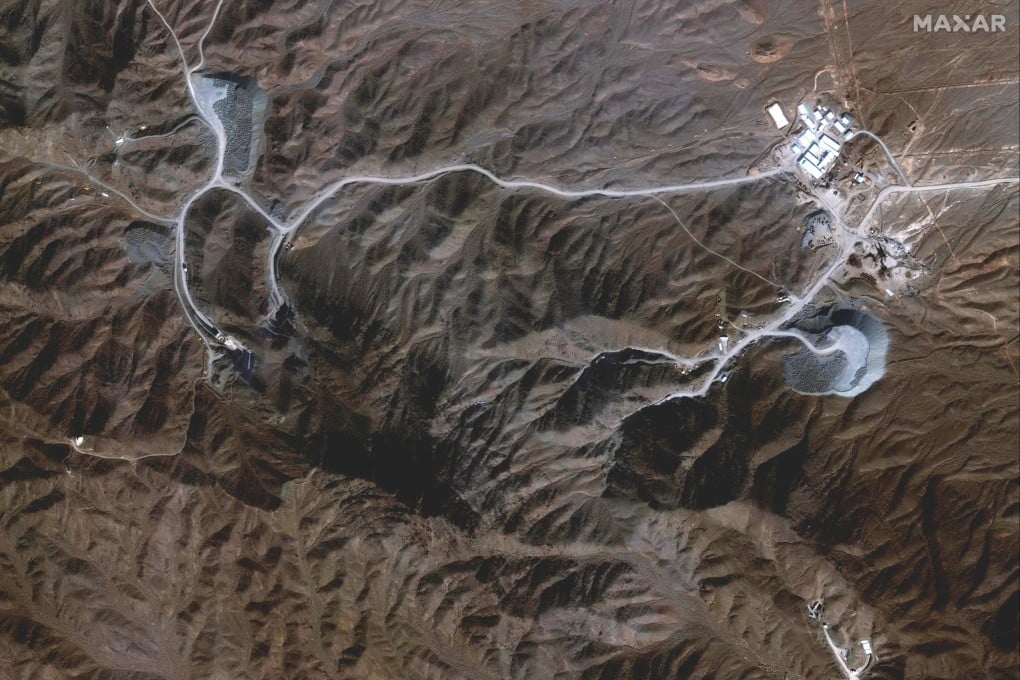Articles in this Cluster
14-06-2025
Israel conducted “Operation Rising Lion,” launching dozens of preemptive airstrikes and dropping over 330 munitions on more than 100 targets in Iran, focusing on nuclear facilities, research scientists, and senior commanders. Iran retaliated with about 100 missiles, most intercepted by Israel’s defenses with U.S. assistance; the U.S. says it did not participate in the strikes.
The attacks followed the IAEA Board’s censure of Iran and Tehran’s move to expand enrichment. IAEA chief Rafael Grossi said the above-ground section of Natanz producing up to 60% enriched uranium was destroyed, with possible centrifuge damage; Iran also reported strikes on Fordo and Isfahan. Key sites highlighted: Natanz (main enrichment hub, partly underground, previously sabotaged), Fordo (smaller, deeply buried), Bushehr (Russia-fueled civilian plant under IAEA monitoring), Arak (heavy water reactor redesigned under the 2015 deal), Isfahan (major research and production center), and the Tehran Research Reactor. U.S. officials urged Iran to negotiate new nuclear restrictions.
Entities: Israel, Iran, IAEA, Rafael Grossi, Natanz • Tone: analytical • Sentiment: negative • Intent: inform
14-06-2025
Markets were driven by three themes: 1) Geopolitics: Israel’s strike on Iranian nuclear infrastructure sparked a Friday sell-off, reversing earlier weekly gains. S&P 500 and Nasdaq fell ~1.1%-1.3% on the day and ended the week down 0.4%-0.6%. Oil jumped ~7%-7.5%, gold hit a two-month high, and the dollar had a weak week despite a small safe-haven bounce. The U.S. and China also outlined a trade-deal framework focused on rare-earths. 2) Economic data: Inflation cooled more than expected, with softer core CPI and a weaker PPI. Jobless claims were steady, and continuing claims remained elevated, signaling a softening but resilient labor market—supportive for consumer spending. 3) AI developments: Apple underwhelmed on AI at WWDC, while Meta invested in Scale AI to build a “superintelligence” unit. Nvidia’s Jensen Huang reiterated massive demand for accelerated computing, projecting Europe’s compute capacity could 10x in two years. Oracle rallied on strong cloud/AI demand and guidance; AMD unveiled a 2026 AI server chip and a customer win with OpenAI.
Entities: Israel, Iran, S&P 500, Nasdaq, Oil • Tone: analytical • Sentiment: neutral • Intent: inform
14-06-2025
CNN reports that Mossad released rare footage detailing a sophisticated intelligence operation that enabled Israel’s unprecedented strikes inside Iran. The operation allegedly penetrated Iranian defenses and targeted top military leaders and nuclear scientists in initial attacks. Correspondent Matthew Chance highlights the scale of the breakthrough and notes Israel is bracing for retaliation as Iranian officials call for “crushing revenge.”
Entities: Mossad, Israel, Iran, Matthew Chance, Iranian military leaders • Tone: analytical • Sentiment: neutral • Intent: inform
14-06-2025
Israel launched unprecedented strikes on three key Iranian nuclear sites—Natanz, Isfahan, and Fordow—aiming to cripple Iran’s nuclear program. Natanz suffered significant damage: above-ground facilities and power infrastructure were destroyed, likely disabling underground centrifuges despite no direct hits below ground; there was no external radiological impact. Isfahan’s damage is disputed: Iran claims limited harm and preemptive equipment relocation, while Israel asserts significant damage and says Iran was advancing toward a bomb there. Fordow, deeply buried and critical due to past enrichment near weapons-grade levels, appears largely unaffected; an Israeli drone was reportedly shot down nearby. The attacks may set back Iran’s program, but if Fordow remains operational, experts say Iran’s progress could only be slowed, not decisively halted. Iran acknowledges nine expert deaths and maintains its program is peaceful.
Entities: Israel, Iran, Natanz, Isfahan, Fordow • Tone: analytical • Sentiment: neutral • Intent: inform
14-06-2025
Israel’s massive strike on Iran was the culmination of years of covert Mossad-led infiltration and coordination with the Israeli military. Code-named “Am Kelavi,” the operation combined airstrikes with prepositioned weapons and drones hidden inside Iran. Mossad agents retrained as commandos established a drone base, concealed precision missiles in vehicles and rocks, and coordinated their activation with Israeli jets. The strikes targeted key sites including the Natanz uranium facility, Iran’s missile and air defense infrastructure, and senior scientists, while a parallel intelligence effort eliminated top Iranian Air Force commanders gathered at a single site. Israeli officials say the operation neutralized Iran’s first wave of retaliation and showcases unprecedented intelligence-military integration, signaling that Iranian assets are within Israel’s reach.
Entities: Mossad, Israel, Iran, Am Kelavi, Natanz uranium facility • Tone: analytical • Sentiment: neutral • Intent: inform
14-06-2025
After unprecedented Israeli airstrikes on Iran—using around 200 aircraft against roughly 100 targets, including Tehran, Natanz’s nuclear facilities, senior commanders, and nuclear scientists—Tehran residents describe fear, anger, and resignation. At least 78 people were killed and 329 injured, including children, with residential buildings hit. Amid economic crisis, people rushed to stock up on essentials, anticipating price hikes and further instability. Some blame Iran’s leadership as much as external enemies; others fear an impending wider war and say civilians will bear the brunt. Attention turns to imminent US-Iran nuclear talks, with President Trump urging Tehran to make a deal and warning Israel’s attacks could intensify.
Entities: Iran, Israel, Tehran, Natanz nuclear facilities, US-Iran nuclear talks • Tone: urgent • Sentiment: negative • Intent: inform
14-06-2025
Experts say Israel’s recent strikes on Iran caused limited damage to nuclear infrastructure. While attacks killed Iranian military leaders and nuclear scientists and hit command-and-control and air defenses, satellite imagery shows no significant harm to the underground facilities at Fordow or Isfahan, and only above-ground damage at Natanz. The IAEA’s Rafael Grossi reported the Natanz pilot enrichment plant and power infrastructure were destroyed, potentially damaging centrifuges due to power loss, but external radiation levels remain normal. Analysts note destroying deeply buried sites like Natanz and Fordow likely requires U.S. support and bunker-buster munitions.
Entities: Israel, Iran, Natanz, Fordow, Isfahan • Tone: analytical • Sentiment: neutral • Intent: inform
